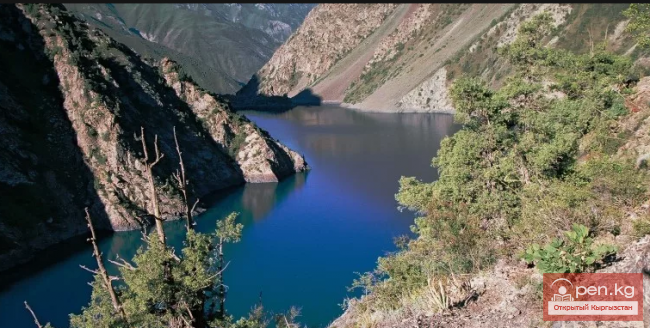
In Kyrgyzstan, approximately 2100 species of mushrooms are currently known. They are conditionally divided into micromycetes and macromycetes. Macromycetes are a group of higher fungi that have large fruiting bodies of various shapes, represented by 286 species.
The first studies of cap mushrooms were conducted between 1935 and 1939 by P.S. Panfilova and N.G. Zaprometov, later by M.D. Prutenskaya for walnut-fruit forests, and A.A. Domashova for the Terkei Ala-Too ridge. In the 1960s, A.A. Elchibaev conducted systematic, targeted research on macromycetes in Northern Kyrgyzstan. The Central Tien Shan and Pamir-Alai are among the poorly studied areas in terms of diversity of all groups of fungi.
The leading higher fungi include the order Aphyllophorales (aphyllophoraceous) – 69 species, Agaricales (agaric) - 162, and the group of orders Gasteromycetes (gasteromycetes) - 43. Aphyllophoraceous fungi develop on trees and cause stem rot. Symbiotrophic macromycetes or mycorrhizal fungi in the mycobiota of cap mushrooms comprise 58 species. Among them are edible species: birch bolete, saffron milk cap, as well as inedible, poisonous ones - webcaps, fiber fungi, and others.
A large group consists of saprotrophic macromycetes (litter and other saprotrophs, carbontrophs, coprotrophs, bryotrophs) – 225 species. They carry out all life processes at the expense of dead organic matter.
Mushrooms are used by the population as a valuable food product. In the republic, 98 species of edible mushrooms have been recorded. The value of mushrooms is determined by local traditions. Among the population of our republic, there is a high demand for the white milk cap (mushroom), butter mushroom, birch bolete, steppe "white" mushroom, blue leg, species of the genus champignon, delicacy saffron milk cap, and others. There are not many naturally poisonous mushrooms: poisonous champignon, species of the genus fiber fungi, false earthstars, false honey fungus (gray-yellow), brown-red umbrella mushroom, and the death cap.
The deterioration of the ecological situation, increasing recreational pressures on forests combined with soil and atmospheric pollution lead to the impoverishment of species composition and a decrease in the fruiting of macromycetes. Mycorrhizal fungi turned out to be the most sensitive. The destruction of their habitats affects the diversity of mushrooms.
Edible mushrooms that are in demand among the population are collected in large quantities and sold in markets. Excessive, sometimes barbaric collection of mushrooms, such as morels, may lead to a sharp reduction in their natural stocks in the near future. Mushrooms may disappear or decrease in number also due to economic development of the territory, anthropogenic impact, forestry activities, and sharp weather conditions that differ from the long-term averages.
Another group of mushrooms, which have no food value, is distinguished by their unusualness. They typically have decorative forms, large sizes, or bright colors. Due to their attractive external qualities, they are subject to thoughtless destruction. Such species are considered rare.
The relevance of mushroom conservation is evidenced by the fact that in some countries of the former USSR (Belarus, Lithuania, Latvia, Tajikistan, Turkmenistan, Karelia, Kazakhstan), mushrooms have been included in the national Red Books: the second edition of the Red Book of the USSR (1984) included 19 species of mushrooms. The second edition of the Red Book of the Kyrgyz Republic includes four species of mushrooms, see Table 1.


















































